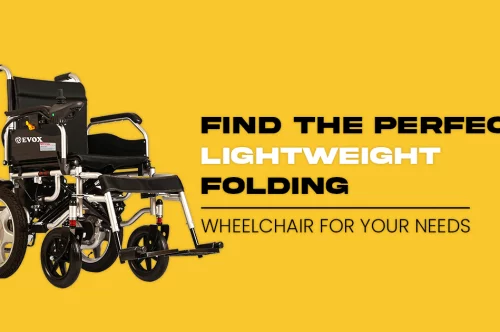Enhance Your Mobility with Electric Wheelchairs

Electric wheelchairs are a revolutionary solution for individuals with disabilities, providing them with the freedom and independence to move around effortlessly. These mobility assistance devices are designed to offer exceptional comfort, convenience, and safety for those in need of extra support.
Benefits of Electric Wheelchairs
Increased independence and mobility for users
Electric wheelchairs provide users with the ability to move around independently, without relying on others for assistance. This increased independence allows individuals to participate in everyday activities and engage more fully in their communities.
Improved quality of life and well-being
By offering a greater level of mobility, electric wheelchairs can significantly enhance the quality of life for users. Being able to move around more easily can lead to increased social interactions, improved mental health, and overall well-being.
Easier navigation in both indoor and outdoor environments
Electric wheelchairs are designed to navigate various terrains, making it easier for users to move around both indoor and outdoor environments. Whether navigating tight spaces indoors or rough terrain outdoors, electric wheelchairs provide users with the ability to travel with ease.
Less physical strain on users compared to manual wheelchairs
Unlike manual wheelchairs, electric wheelchairs are powered by motors, reducing the physical strain on users. This can be especially beneficial for individuals with limited strength or mobility, allowing them to conserve energy and prevent fatigue.
Types of Electric Wheelchairs
Power wheelchairs vs. mobility scooters
Electric wheelchairs come in two main types: power wheelchairs and mobility scooters. Power wheelchairs are designed for individuals who require full-time use of a wheelchair for mobility, while mobility scooters are more suitable for those who need assistance with short distances or have limited mobility.
Foldable vs. fixed frame models
When choosing an electric wheelchair, you will also need to consider whether you prefer a foldable or fixed frame model. Foldable electric wheelchairs are ideal for those who need to transport their wheelchair frequently, as they can easily be folded and stored in a car trunk. Fixed frame models, on the other hand, offer more stability and durability.
Indoor vs. outdoor use
Another factor to consider when selecting an electric wheelchair is the intended use. Some electric wheelchairs are designed specifically for indoor use, featuring a smaller turning radius and lightweight design. Others are built for outdoor use, with larger wheels and stronger motors to handle rough terrain.
Features to Consider When Choosing an Electric Wheelchair
When choosing an electric wheelchair, there are several important features to consider to ensure that you select the best option for your needs.
Weight capacity and size
-
Weight Capacity: It is crucial to check the weight capacity of the electric wheelchair to ensure it can support your weight.
-
Size: Consider the dimensions of the wheelchair to ensure it fits through doorways and maneuver easily in your home or other spaces.
Battery life and charging options
-
Battery Life: Look for electric wheelchairs with long battery life to avoid frequent recharging.
-
Charging Options: Consider how the wheelchair is charged and if it is convenient for your daily routine.
Comfort and seating options
-
Comfort: Check for comfortable seating options such as padding and adjustable features.
-
Seating Options: Choose a wheelchair with seating options that accommodate any specific needs you may have.
Maneuverability and turning radius
-
Maneuverability: Look for electric wheelchairs that are easy to maneuver in tight spaces and navigate through obstacles.
-
Turning Radius: Consider the turning radius of the wheelchair to ensure smooth and easy turns.
Safety features
-
Anti-Tip Wheels: Ensure the wheelchair is equipped with anti-tip wheels to prevent tipping over on inclines.
-
Seat Belts: Check for seat belts to secure yourself while using the electric wheelchair.
How to Maintain and Care for an Electric Wheelchair
Regular Cleaning and Inspection
Regular cleaning of your electric wheelchair is essential to ensure its longevity and performance. Use a damp cloth to clean the frame, seat, and footrests, and ensure that no dirt or debris is trapped in the wheels or motor. Regularly inspect the wheelchair for any signs of wear and tear, such as loose screws or damaged components, and make repairs promptly.
Battery Maintenance and Charging Tips
Proper maintenance of the battery is crucial for the efficient operation of your electric wheelchair. Follow the manufacturer's guidelines for charging the battery and avoid overcharging or undercharging. It is also important to regularly check the battery connections and terminals for any corrosion, and clean them if necessary. If you notice any issues with the battery, such as decreased performance or capacity, consider replacing it to avoid any disruptions.
Storage and Transportation Recommendations
-
Storage: When not in use, store your electric wheelchair in a dry and secure location, away from extreme temperatures or moisture. Consider using a protective cover to prevent dust buildup and damage.
-
Transportation: When transporting your electric wheelchair, make sure to secure it properly to avoid any movement or damage during transit. Use a wheelchair-accessible vehicle or ramp, if necessary, and follow the manufacturer's guidelines for safe transportation.
Innovations in Electric Wheelchair Technology
Overview of recent advancements in electric wheelchair design and features
Electric wheelchairs have come a long way in terms of technology and design in recent years. Manufacturers are constantly innovating and introducing new features to improve the overall user experience. Some of the latest advancements include:
-
Advanced control systems: Modern electric wheelchairs are equipped with sophisticated control systems that allow for smoother and more precise maneuverability. Users can easily navigate through tight spaces and over uneven terrain with ease.
-
Lithium-ion batteries: Long gone are the days of heavy and bulky lead-acid batteries. Many electric wheelchairs now come with lightweight and high-capacity lithium-ion batteries that provide longer range and faster charging times.
-
Smart technology integration: Some electric wheelchairs are now compatible with smart devices, allowing users to control their wheelchair via smartphone apps. This not only adds convenience but also enhances safety and security features.
-
Ergonomic design: Manufacturers are paying more attention to the ergonomics of electric wheelchairs, ensuring that users are comfortable and supported for extended periods of time. Adjustable seating options and customizable features are now common in newer models.
-
Improved suspension systems: Many electric wheelchairs now come with advanced suspension systems that provide a smoother ride over rough terrain. This helps to reduce fatigue and discomfort for users who spend long hours in their wheelchairs.
Future trends in mobility assistance devices
Looking ahead, the future of electric wheelchairs is promising as technology continues to evolve at a rapid pace. Some of the anticipated trends in mobility assistance devices include:
-
Enhanced connectivity: Electric wheelchairs are expected to become even more connected in the future, with features such as real-time monitoring and data tracking. This can help users and caregivers keep track of usage patterns and optimize performance.
-
Artificial intelligence integration: AI technology is likely to play a significant role in the development of electric wheelchairs, with the potential for autonomous navigation and smart decision-making capabilities.
-
Environmentally friendly options: As sustainability becomes an increasing concern, manufacturers are exploring eco-friendly materials and energy-efficient technologies for electric wheelchairs. This includes solar charging options and recyclable components.
-
Personalized customization: In the future, electric wheelchairs may be tailored to individual needs and preferences through advanced customization options. This could include adjustable seating positions, personalized driving modes, and intuitive control interfaces.
-
Integration with smart home systems: Electric wheelchairs may be integrated with smart home systems in the future, allowing users to control other devices and appliances with their wheelchair. This can streamline daily activities and improve overall accessibility.
Conclusion
Electric wheelchairs offer a wide range of benefits for individuals with mobility issues, providing increased independence and freedom to move around with ease. From improved maneuverability to customizable features, electric wheelchairs have revolutionized mobility assistance. When choosing an electric wheelchair, it is essential to consider factors such as type, features, maintenance, insurance coverage, legal rights, and accessible transportation options.
As you explore the world of electric wheelchairs, we encourage you to carefully weigh your options and find the best chair that suits your unique needs and lifestyle. Whether you prioritize comfort, speed, or portability, there is a perfect electric wheelchair out there for you. Don't hesitate to reach out to professionals or do further research to ensure you make an informed decision that enhances your quality of life.




















